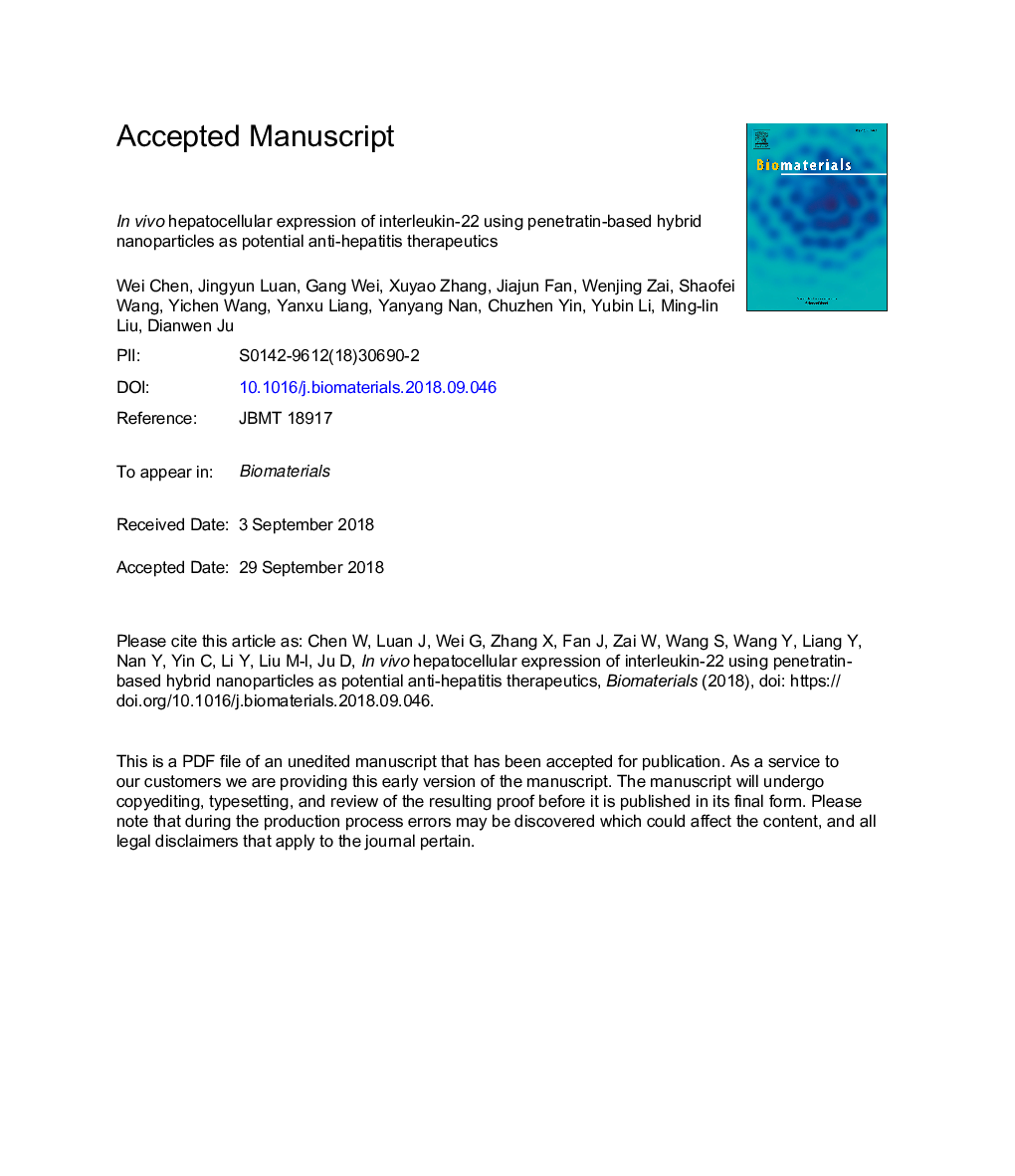| کد مقاله | کد نشریه | سال انتشار | مقاله انگلیسی | نسخه تمام متن |
|---|---|---|---|---|
| 11016700 | 1773883 | 2018 | 51 صفحه PDF | دانلود رایگان |
عنوان انگلیسی مقاله ISI
In vivo hepatocellular expression of interleukin-22 using penetratin-based hybrid nanoparticles as potential anti-hepatitis therapeutics
ترجمه فارسی عنوان
بیان انعطاف پذیری داخل سلولی اینترلوکین -22 با استفاده از نانوذرات هیبرید مبتنی بر پنتراتین به عنوان درمان های ضد هپاتیت بالقوه
دانلود مقاله + سفارش ترجمه
دانلود مقاله ISI انگلیسی
رایگان برای ایرانیان
کلمات کلیدی
هپاتیت فرار آندوسومی، هپاتوسیت، تحویل ژنی، اینترلوکین 22،
موضوعات مرتبط
مهندسی و علوم پایه
مهندسی شیمی
بیو مهندسی (مهندسی زیستی)
چکیده انگلیسی
Hepatocellular injury is the pathological hallmark of hepatitis and a crucial driver for the progression of liver diseases, while the treatment options are commonly restricted. Interleukin-22 (IL-22) has attracted special attention as a potent survival factor for hepatocytes that both prevents and repairs the injury of hepatocytes through activation of STAT3 signaling pathway. We hypothesized that the ability to generate potent expression of IL-22 locally for the treatment of severe hepatocellular injury in hepatitis was a promising strategy to enhance efficacy and overcome off-target effects. Accordingly, we developed a polypeptide penetratin-based hybrid nanoparticle system (PDPIA) carrying IL-22 gene by a self-assembly process. This nanocomplex modified with penetratin featured direct translocation across the cellular or endosomal membrane but mild zeta-potential to facilitate the high cellular internalization and endosomal escape of the gene cargos as well as scarcely Kupffer cells uptake. More importantly, PDPIA afforded preferential liver accumulation and predominant hepatocytes internalization following systemic administration, which showed pharmacologically suitable organ and sub-organ-selective properties. Subsequent studies confirmed a considerable protective role of PDPIA in a model of severe hepatitis induced by concanavalin A, evidenced by reduced hepatocellular injury and evaded immune response. The locally expressed IL-22 by PDPIA activated STAT3/Erk signal transduction, and thus promoted hepatocyte regeneration, inhibited reactive oxygen species (ROS) accumulation as well as prevented the dysfunction of mitochondrial. In addition, this system did not manifest side effects or systemic toxicity in mice. Collectively, the high versatility of PDPIA rendered its promising applications might be an effective agent to treat various hepatic disorders.
ناشر
Database: Elsevier - ScienceDirect (ساینس دایرکت)
Journal: Biomaterials - Volume 187, December 2018, Pages 66-80
Journal: Biomaterials - Volume 187, December 2018, Pages 66-80
نویسندگان
Wei Chen, Jingyun Luan, Gang Wei, Xuyao Zhang, Jiajun Fan, Wenjing Zai, Shaofei Wang, Yichen Wang, Yanxu Liang, Yanyang Nan, Chuzhen Yin, Yubin Li, Ming-lin Liu, Dianwen Ju,
